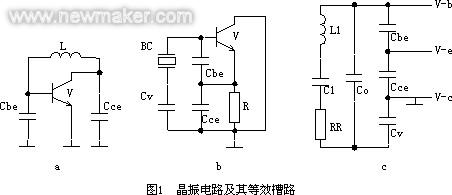Each single-chip system has a crystal oscillator. The whole process is called a crystal oscillator. In the single-chip system, the role of the crystal oscillator is very large. He combines the internal circuit of the single-chip microcomputer to generate the clock frequency necessary for the single-chip microcomputer. The execution of all the instructions of the single-chip microcomputer is established. On this basis, the higher the clock frequency provided by the crystal oscillator, the faster the microcontroller will run.
The crystal oscillator operates in a resonant state with a crystal that converts electrical energy and mechanical energy into each other to provide stable, accurate single-frequency oscillation. Under normal operating conditions, the average crystal frequency is absolutely accurate to 50 parts per million. Advanced precision is higher. Some crystal oscillators can also be adjusted by a applied voltage within a certain range, called a voltage controlled oscillator (VCO).
The role of the crystal is to provide the system with a basic clock signal. Usually a system shares a crystal to keep the parts in sync. Some communication systems use different crystals for the fundamental and RF frequencies, and are synchronized by electronically adjusting the frequency.
The crystal is typically used in conjunction with a phase-locked loop circuit to provide the clock frequency required by the system. If different subsystems require clock signals of different frequencies, they can be provided by different phase-locked loops connected to the same crystal.
Below I will specifically introduce the role and principle of the crystal oscillator. The crystal oscillator generally adopts the capacitor three-terminal (Cobitz) AC equivalent oscillation circuit as shown in Figure 1a; the actual crystal oscillator AC equivalent circuit is shown in Figure 1b, where Cv is used. To adjust the oscillation frequency, generally use varactor diode plus different reverse bias voltage to achieve, which is also the mechanism of voltage control; replace the crystal equivalent circuit after the crystal as shown in Figure 1c. Where Co, C1, L1, RR are the equivalent circuits of the crystal.

Crystal oscillator circuit and its equivalent circuit diagram
Analysis of the entire oscillation tank shows that the use of Cv to change the frequency is limited: the entire tank capacitance C=Cbe, CCe, Cv, which determines the oscillation frequency, is connected in series with Co in parallel with C1. It can be seen that the smaller C1 is, the larger Co is, and the smaller the effect of Cv on the entire tank capacitance. Therefore, the frequency range in which "pressure control" can be made is smaller. In fact, since C1 is small (on the order of 1E-15), Co cannot be ignored (1E-12 magnitude, a few PF). Therefore, when Cv becomes larger, the effect of lowering the frequency of the channel is getting smaller and smaller, and when Cv becomes smaller, the effect of increasing the frequency of the channel is getting larger and larger. This aspect causes the nonlinearity of the voltage control characteristics. The larger the voltage control range, the more the nonlinearity is. On the other hand, the feedback voltage (the voltage on the Cbe) that is distributed to the oscillation is getting smaller and smaller, and finally the vibration is stopped. Through the schematic diagram of the crystal oscillator, you should have a general understanding of the role of the crystal oscillator and the working process. The crystal oscillator with a higher overtone frequency has a smaller equivalent capacitance C1; therefore, the frequency variation range is smaller.
The clock sources of microcontrollers can be divided into two categories: clock sources based on mechanical resonators, such as crystal oscillators, ceramic resonant tanks, and RC (resistor, capacitor) oscillators. One is the Pierce oscillator configuration for crystal and ceramic resonant tanks. The other is a simple discrete RC oscillator.
Use a multimeter to measure whether the crystal oscillator works. Measure whether the voltage of the two pins is half of the working voltage of the chip. For example, if the operating voltage is +5V of the 51 MCU, it is about 2.5V. In addition, if you touch the other foot of the crystal with a tweezers, this voltage has a significant change, which proves to be oscillating.
The types of crystal oscillators are SMD and DIP type, that is, patch and pin type.
Let's talk about DIP: Common sizes are HC-49U/T, HC-49S, UM-1, UM-5, which are all in MHz units.
SMD: There are 0705, 0603, 0503, 0302.
Dongguan Yijia Optoelectronics Co., Ltd. , https://www.everbestlcdlcm.com